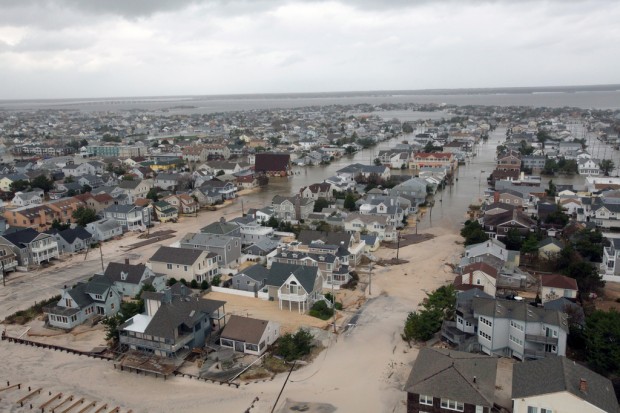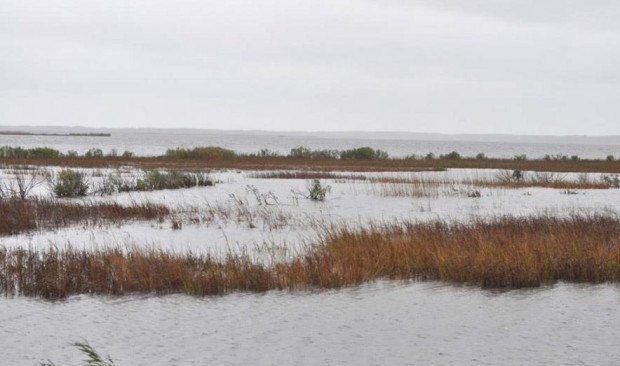We have much more to do and your continued support is needed now more than ever.
Post-Sandy: Working with Nature to Keep Us Safe

Like many children who grew up in the Philadelphia area, I spend my summers going (as we say in Philly) “down the shore.” For me that meant the town of Margate, NJ, just south of Atlantic City on Absecon Island, a 1.6 square mile barrier island on the Atlantic coast. During Hurricane Sandy, Gov. Chris Christie evacuated the island and today, family and friends are just beginning to return to their homes and assess the devastation.
In the wake of Hurricane Sandy, the first priorities for federal, state, and local governments are to prevent additional loss of life, assist those in need with all resources possible, and begin the difficult recovery process. But once the recovery process begins my family and friends, along with countless others up and down the eastern seaboard, will begin to consider how to repair, rebuild and strengthen their homes and business properties.
As we move towards the repair and recovery phase, NWF has identified a 10 ways to better prepare for extreme hurricanes: five national policy changes that can be made right now to make all us safer, and five activities that must be stopped to avoid and minimize future storm-related catastrophes. These recommendations all have one thing in common – they promote protection and restoration of natural defenses that are critical for safe, affordable, and sustainable protection from storms and floods.
Five Actions to Protect People, Property and Wildlife from Storm and Flood Damages

- Promote Climate Readiness. Many federal, state, and municipal agencies have taken steps to develop climate-adaptation plans, which chart a path toward preparing for and coping with extreme weather events and other climate impacts. Most of these plans have yet to be implemented, though, and will require political will and adequate funding to truly create more climate-resilient communities. And Readiness is the key word here—the best time to protect against and plan for natural catastrophe is long before it happens. We can start by implementing the recommendations of the Interagency Climate Change Adaptation Task Force.
- Make Flood Insurance Reform Real. Hurricane Sandy destroyed countless properties across the Northeast, including many that belonged to people who had no idea their property was located within a floodplain and therefore did not have flood insurance. Thankfully, the just passed Biggert-Waters Flood Insurance Reform Act made great strides towards updating how we map flood zones by taking into account increased storm frequency and intensity. By updating our maps and requiring more people to purchase flood insurance we’ll protect more properties, and also send a market signal that there are smarter, safer and better places to develop than in the middle of a floodplain. We can do this if we fully fund and implement the Flood Insurance Reform Act.
- Protect Our Natural Defenses. Natural features like wetlands reduce storm intensity and protect nearby properties from flooding. In fact, a single acre of wetland can store 1–1.5 million gallons of flood water. We must capitalize on these benefits and ensure that government helps protect these beneficial and cost-effective flood control features. The Obama Administration took several new steps to meet this goal. It has created new guidance and intends to pursue rulemaking to reinstate crucial Clean Water Act protections for wetlands and streams, and is also poised to release new water resources planning guidelines.
- Encourage Better Stormwater Management. During major rain events, like Hurricane Sandy, stormwater and sewer systems are often inundated. New storm water rules and guidance allow us to address these serious storm water concerns for communities across the country—especially those with aging infrastructure. We must update stormwater regulations to require that major sewer system upgrades in urban areas account for projected increases in rainfall and provide adequate holding basins to protect towns and communities from flooding, while protecting water quality at the same time.
- Reduce Carbon Pollution. To avoid increased damage from super storms and other severe weather events, Americans must begin taking steps to reduce carbon pollution. The administration must follow through on its efforts to use the Clean Air Act to limit carbon pollution from power plants and other sources. And it must accelerate development and deployment of innovative clean energy solutions. Until we solve the problem at this level, we’ll be playing catch up after every storm. See my colleague Joe’s Mendelson’s recent piece for more details.
Five Actions that put People, Property and Wildlife at Risk from Storm and Flood Damages

- Government Subsidization of Development in High Risk Areas. Earlier this year, the Congress passed and the President signed the Biggert-Waters Flood Insurance Reform Act of 2012 which made significant steps towards ensuring that property owners pay actuarial- or market-based rates for flood insurance. This is important as it helps people understand their risk and lessens floodplain development via the free market. But the bill didn’t go far enough. There are still countless properties that receive federal subsidies for flood insurance, including home owners living behind decertified and failing levees. Until we ensure everybody pays according to risk, we should continue to expect dangerous coastal development.
- Failure to Prioritize & Harmonize Civil Works Projects. While some improvements have been made to the U.S. Army Corps of Engineers planning process, the Corps continues to plan and operate projects that increase flood risks and destroy natural features that protect communities from flooding. Moving forward, Congress must consider the flooding impacts of all projects regardless of their primary purpose. For instance, we must consider the flooding impacts of navigation projects and have the political courage to veto them if these projects put people and property at risk.
- Destruction of wetlands and streams. Actions by the Supreme Court, the Army Corps of Engineers, and the Environmental Protection Agency over the last decade undermine the Clean Water Act’s ability to prevent destruction of many wetlands and small streams by developers and others. Similarly, lax enforcement of the Farm Bill’s Swampbuster restrictions has exacerbated wetlands loss. Illinois, Indiana, Ohio, Iowa, and Missouri have each lost 85-90 percent of their wetlands and countless headwater streams. Between 1998 and 2004, coastal watersheds in the eastern United States lost almost 1 percent of their freshwater wetlands. Just a 1–percent loss of a watershed’s wetlands can increase total flood volume by almost 7 percent.
- Backstop State and Federal Insurance Programs: Subsidized government insurance—like the National Flood Insurance Program of Florida’s Citizens Property Insurance Corp—mask risk and encourage unsafe development. And still legislators across the country continue to call for an expansion of these subsidies by creating federal backstops or bailouts for these poorly run programs. We must not move towards this type of dangerous policy.
- Build with Concrete instead of Mud and Grass: The WRDA 2007 national water policy proposed to “protect the environment” by “protecting and restoring the functions of natural systems and mitigating any unavoidable damage to natural systems,” and by “seeking to avoid the unwise use of floodplains.” The Corps is ignoring these requirements by continuing to promote environmentally destructive and costly structural projects even where less costly and environmentally protective nonstructural and restoration measures would provide better solutions. We need a major change of course to stop building structures that protect those directly behind them and exacerbate downstream flooding and instead use natural, open floodplains to allow rivers room to expand and cover their banks without impacting property.
How You Can Help
By going to the polls this Tuesday, we can show Big Polluters their money is no match for millions of Americans who have the power to elect leaders that will stand up to protect wildlife and fight climate change. Get ready to vote by locating your polling place today, deciding now what time you will vote and making sure that your friends and family have rides to the polls. Let’s Pack the Polls for Wildlife.




















